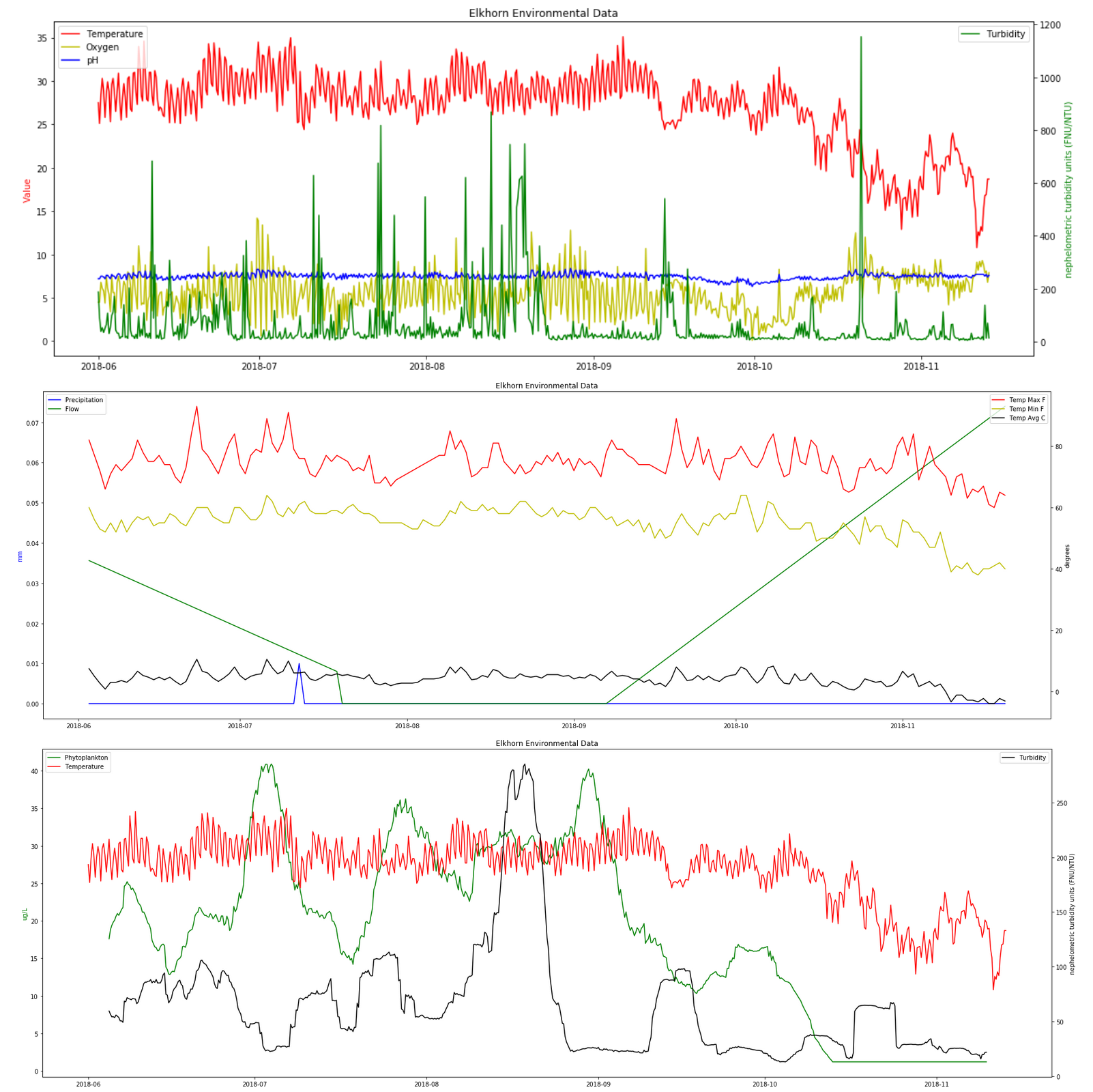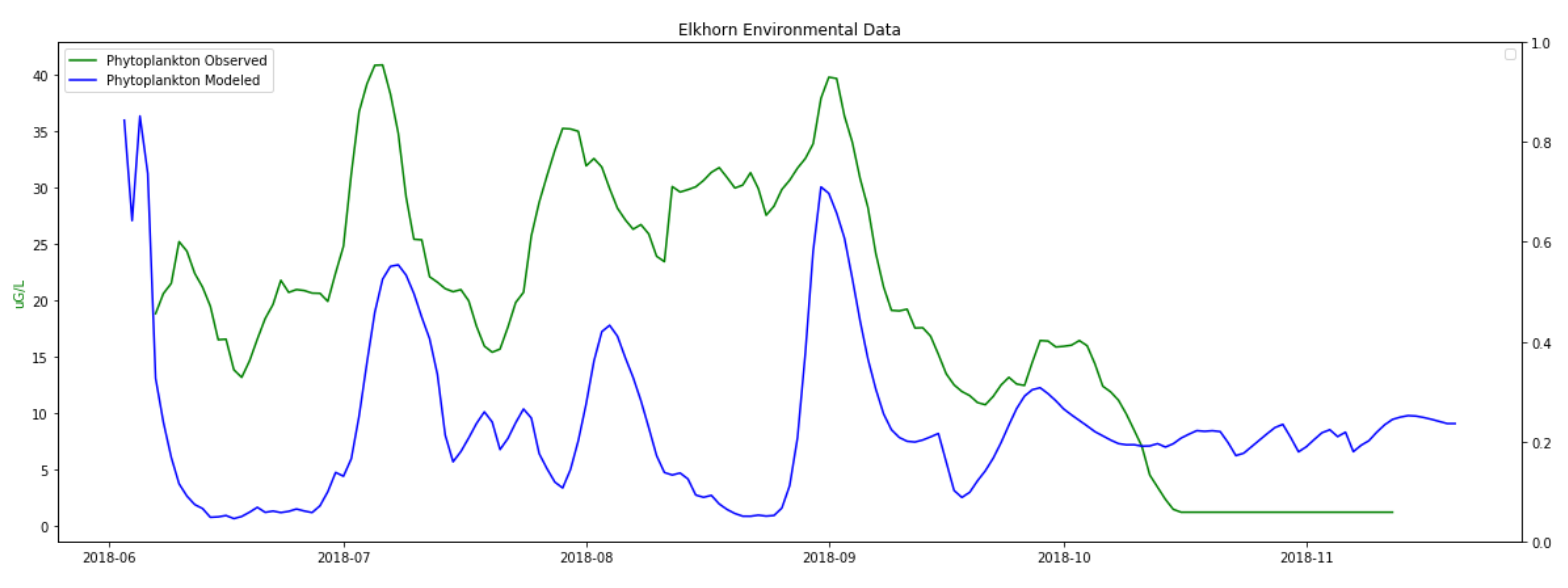Class on December 11, 2018
Students spent the last class before the final presentations as an in class reading and workshop day. Each student team sat together and worked on their
presentations. The team highlighted on December 4th continued working on the Elkhorn estuary model that they would then
apply to the Ankobra watershed. The Elkhorn estuary sits near the Pacific ocean midway down the California coast.

The Ankobra team refined a Python Notebook using two sources of environmental data. One highlighted weather data while the other highlighted stream data. The team added Ankobra simulated stream flow data to the second data source with a simple multi-step linear model in order to play with formulas that would be relevant to residence time in the Ankobra estuary, but used the dry v. rainy season characteristics of the Elkhorn.
Updated plots for the environmental data appear as in the image here after running the relevant steps in the Elkhorn Python Notebook:

Key modeling formulas, related to the issues workshopped on December 4th, used in the notebook include:
The notebook then creates a comparison of the modeled results to the environmental data for chlorophyll levels where that data exists:

The team came to the conclusion that turbidity appears to have a very important contribution to phytoplankton levels in the Elkhorn. Progress during class, with help from the faculty, led to successful final presentations.

The Ankobra team refined a Python Notebook using two sources of environmental data. One highlighted weather data while the other highlighted stream data. The team added Ankobra simulated stream flow data to the second data source with a simple multi-step linear model in order to play with formulas that would be relevant to residence time in the Ankobra estuary, but used the dry v. rainy season characteristics of the Elkhorn.
Updated plots for the environmental data appear as in the image here after running the relevant steps in the Elkhorn Python Notebook:

Key modeling formulas, related to the issues workshopped on December 4th, used in the notebook include:
#TURBIDITY NUTRIENT ADDITION (from benthos) percent of daily nutrient addition into the water:
T = .02 #* turbid/200
v = 3. #rate of maximum phytoplankton nutrient uptake
#TURBIDITY SUNLIGHT SUPRESSION: uptake surpressed by sunlight supression from turbidity in water column
v = v * (1-(turbid/200))
#Anthony et al., 2004, showed maximum affect of turbidity at 80%
if (v<.6):
v=.6
#RESIDENCE TIME: Nixon et al. (1996) showed that the net fractional
#transport of nitrogen and phosphorus through
#estuaries to the continental shelf was inversely
#correlated with the logarithm of the mean residence time of waters within them.
Nl = 1/math.log(residence[math.floor(t)])
The formulas are injected into the NPZ modeling approach pursued by the Miller chapter 4 notes.
The notebook then creates a comparison of the modeled results to the environmental data for chlorophyll levels where that data exists:

The team came to the conclusion that turbidity appears to have a very important contribution to phytoplankton levels in the Elkhorn. Progress during class, with help from the faculty, led to successful final presentations.

